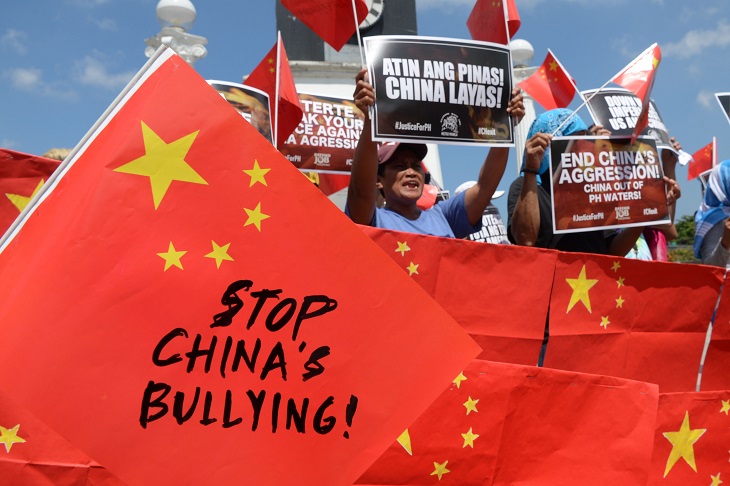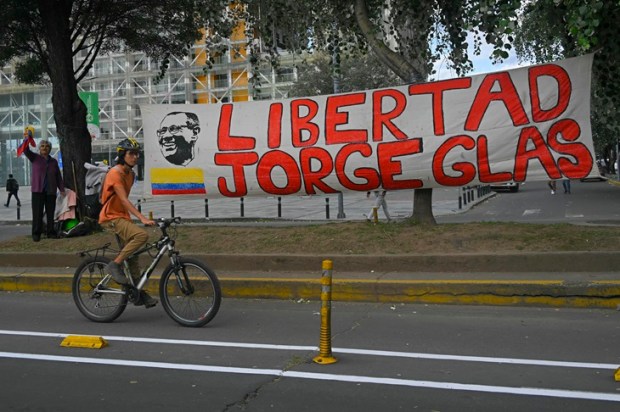Re-elected Chairman Xi has (essentially) unlimited power. Addressing his fabricated version of the past and future is one of many problems China and the world will have to face.
The Chinese record of history has been re-written to support the Chines Communist Party’s political agenda. George Orwell, in his book 1984, described the rapidity with which the Ministry of Truth could adjust the past to suit present requirements. China has taken inspiration from this approach. To understand China, (there is a parallel with Russia, and the supposed historical connection with Ukraine), it is necessary to acknowledge some facts. These facts become more important as the risk of war in the region increases.
All empires are ephemeral, typically lasting a couple of centuries. The official line claims that China is the ‘oldest continuous civilisation in the world’, lasting for two millennia. The reality is quite different, with the region roughly known as China fragmenting and reforming in a process that included many centuries under non-Chinese domination. The Chinese empire finally degenerated into chaos, leading to rebellion and its end in 1912, with war-lords fighting for control. Subsequently, two dominant armies emerged: the Chinese Communist Party (CCP) and the Nationalist Kuomintang (KMT), who combined to fight off Japanese invasion. With Japan’s defeat at the end of the second world war, the two forces turned on each other and, in 1949, the KMT were forced to flee.
Until the war’s end, the island of Taiwan, with its small indigenous population, had been part of the Japanese (not Chinese) empire; it subsequently provided a refuge for the non-communist forces. Since those days, it has become a vibrant, democratic, economic success – a success the communists now wish to take over for ‘re-education’, subduing Taiwan’s population of 23.4 million. Examples of how this process works are amply demonstrated by events in the past in Tibet, Xinjiang, and more recently in Hong Kong.
As part of its plan to redress the ‘humiliation of the last 100 years’, China claims the island of Taiwan as a long-lost province of the mainland. This is pure fiction.
The story of China’s disastrous attempts at establishing farming communes and poorly planned industrialisation, as under Stalin in Russia, is similarly re-written. In reality, its collectivised approach to agriculture produced major famines, with an estimated 30 million deaths in the 1950s. The Great Leap Forward and Cultural Revolution, starting around the 1960s, added to the woes of the population with millions more dead.
After Mao’s death in 1976, the moderate revolutionary leader, Deng Xiaoping, followed a more pragmatic socialist philosophy, allowing individuals to own property and develop business. Going against Marxist principles, Deng recognised that a free enterprise economy was the solution, with financial incentives and encouragement of skilled workers, rather than their elimination.
His loosening of restrictions nearly resulted in the loss of political control, with the Tiananmen Square protests bringing this period of relaxation to an abrupt end in 1989. Initiated by students, up to a million gathered in the square, with an estimated 10,000 deaths before control was re-asserted; another event written out of Chinese history.
Since that time, the continued policy of encouraging entrepreneurs, but with central control, has led to rapid growth and wealth development. Lifestyle improvement, with millions moving out of poverty, has reduced the demand for more personal freedoms.
Rapid industrialisation, as in Shenzhen, has come with other costs; pollution of food, water, and air has been massive and, although average life expectancy has reputedly increased to 77. Its neighbours in Hong Kong, Macau, and Japan average 85. Compared with America, the rates of all cancers are many times higher, perhaps related to these environmental factors.
Mao had previously encouraged population expansion but, after reaching 1.4 billion, a decision was made in 1980 by successive governments to control China’s growth by introducing a one child per family policy. This decision not only reduced the number of offspring, but resulted in increased abortion of females and a 10 per cent increase in male to female ratio. This program, which continued until 2013, has caused a predictable demographic crisis; the result is an ageing population supported by a shrinking number of workers, with major social, economic and military implications. Future Chinese predictions are that the total population will fall dramatically from the current 1.4 billion to 587 million by 2100 and that India will overtake China as the world’s most populous country by 2023.
With the ascension of Chairman Xi Jinping in 2012, a more authoritarian control returned, and the country has since adopted an aggressive international stance. Despite being on the council of the UNHCR, there has been no attempt to adhere to the UN human rights declaration, with its demands for free speech, freedom of assembly, legal rights or religious freedom, and non-discrimination of minority groups. China’s influence has allowed it to prevent a UN discussion of the organisation’s damning report on the treatment of ethnic Uyghurs.
As part of increasing assertiveness, China has made claims to the South China Sea. After they were rejected by the UN Convention on the Law of the Sea at the Hague-based Permanent Court of Arbitration, it built military outposts on coral reefs. This was an illegal activity that produced no response from the US Obama administration or the UN. Similarly, avoidance of the WTO regulations, and their continued designation of China as a developing country, has persisted with impunity.
Increasing military expenditure has caused international concern; especially as China is in possession of the world’s largest army of 2 million soldiers. Neighbouring countries, Taiwan and Japan, are increasingly under military threat, as are the Philippines, Indonesia, and historical enemy Vietnam. The other important non-military local threat comes from control of water supplies; dams on the Brahmaputra River threaten supplies to India and Bangladesh, reducing flow on the Mekong River threaten livelihoods in Cambodia, Myanmar, Laos, and Thailand.
Cyber warfare has been added to its list of aggressive activities, with an army of 50,000+ Chinese hackers attacking both public and private enterprises worldwide, accounting for an estimated 41 per cent of world traffic. The old phrase ‘Chinese whispers’ has taken on a new meaning.
Another aspect of this expansive approach is its use of economic muscle. The Belt and Road Initiative, presented as a modern approach to the Silk Road, was begun in 2013 by President Xi in which money is dubiously loaned to countries to aid their development. This seemingly benign approach, now involving 146 countries, has led to debt-trap diplomacy with repayment enforced by extracting economic, infrastructure, or political aims in lieu. Worldwide projects are worth an estimated $1 trillion and African loans had already risen to $143 billion by 2020. Areas of current concern include claims on ports in Sri Lanka and the Horn of Africa and, closer to home, developments in the Solomons.
Financial coercion has also been used through education, with universities throughout the world given incentives to set up Confucius Institutes to ‘promote Chinese culture’. These have provided an opportunity to steal new technology, to influence academic freedom, and control the local diaspora. Many have been shut down in Canada, America, and Europe, but persist in Australia.
The Thousand Talents program, established in 2008, is also another means of stealing technology. Financial incentives have been offered to an estimated 60,000 high-profile individuals throughout the world to have periods of work in universities in China for ‘research and academic exchange’. This program has coincided with a dramatic explosion of Chinese patents, suggesting intellectual property theft from these exchanges. The Chinese government has deleted all references to this scheme since 2018.
These programs all cost a lot of money. Officially Chinese debt was around 45 per cent of GDP in 2020, modest by most countries’ standards; however, much debt is hidden by opaque accounting and that figure could be as high as 300 per cent. Examples, such as the local real estate market decline, raise doubts about the country’s financial stability.
Recent predictions were that China would overtake the US as the world’s biggest economy by 2028, but the number of workers is declining, the population is ageing, and the world has awoken to technology robbery. Increasing debt is a hidden concern, environmental pollution is concealed, and corruption remains rampant. Perhaps the CCP economy has already reached its peak?
The other challenge facing the Chinese authorities is also self-inflicted. The Covid pandemic has returned home and, failing to learn from others’ experience, the ongoing lock-down response is producing local discontent and dramatically affecting manufacturing and exports. Low vaccination levels and poor vaccine efficacy have put the country at greater risk of a major surge. There is a certain poetic justice that the disputed point of origin of the virus is where it continues to cause major disruption, with tens of millions still in lockdown, affecting up to a third of the economy.
Chairman Xi has total dictatorial control. An increase in central regulation (as in Mao’s time) could further adversely affect the economy. Inflexibility makes it difficult to learn from mistakes, particularly if there is denial they have occurred. What has already been labelled the Second Maoist Age may end up like the first; foreign affairs specialist, Robert Kaplan, commented that ‘only China can defeat China’. Early signs are that Xi may have blinked, and now be facing reality, with relaxation of some restrictions and the likelihood of a surge in infections.
All these factors may be in mind if he considers a less than patient future to claiming Taiwan. The limited Western response to the Ukraine invasion might also encourage early military intervention; certainly, a re-evaluation of tactics and equipment will result from the conflict. Should the plan for economic domination falter, or dissent at home increase, the frequent alternative has been to go to war.
Got something to add? Join the discussion and comment below.
Get 10 issues for just $10
Subscribe to The Spectator Australia today for the next 10 magazine issues, plus full online access, for just $10.


























Comments
Don't miss out
Join the conversation with other Spectator Australia readers. Subscribe to leave a comment.
SUBSCRIBEAlready a subscriber? Log in